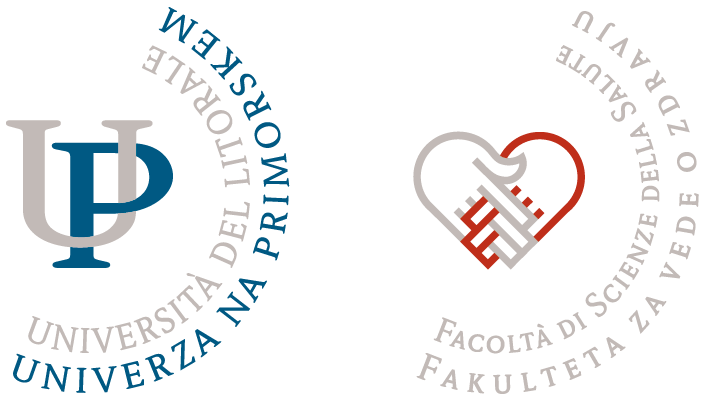Content
- Lectures: 60 hours
- Independent work: 120 hours
Subject carrier
Description
1. Cell structure, cellular respiration and intake of energy by cellular metabolism of carbohydrates, fats and proteins.
2. Pathophysiology of fat, carbohydrates and protein metabolism
a. Fat metabolism and disorders
b. Carbohydrate metabolism and disorders
c. Protein metabolism and disorders
3. Thermoregulation.
4. Metabolism of water and electrolytes in the human body, endocrine control of water and electrolyte levels, pathophysiology of dehydration and edema.
5. Vitamins, minerals and trace elements, their importance for the origin of some anemia, coagulopathy disorders, wound healing.
6. Structure and normal function of the gastrointestinal tract (GIT) and function of the alimentary tract in different disease processes:
a) Enteric nervous system and enteric endocrine system as GIT control,
b) Mechanisms of the origin and pathophysiology of diseases of the upper GIT: gastritis, peptic ulcer,
c) Pathophysiology of intestinal diseases: motility disorders, malabsorption syndrome and coeliac disease, Chron’s disease, ulcerative colitis,
d) Basic liver structure and function, pathophysiology of alcohol hepatotoxicity, liver cirrhosis, gallstones,
e) Normal exocrine and endocrine pancreatic function, pathophysiology of diabetes, pancreatitis,
f) Pathophysiology of constipation, vomiting and diarrhea.
7. Microbiota and dysbiosis
1. PATHOPHYSIOLOGY OF ENDOCRINE DISORDERS
1.1. Introduction to endocrine system
a) Communication systems in human organism
b) Endocrine communication systems
1.2. Disorders of the adrenal cortex
a) Effects and mechanisms of actions of the adrenal cortex hormones
b) Hyperfunction of the adrenal cortex; Cushing syndrome
c) Hypofunction of the adrenal cortex; Addison disease
1.3. Disorders of calcium and phosphate metabolism
a) Hormones and tissues involved in the calcium and phosphate metabolism
b) Clinical consequences of abnormal calcium and phosphate concentrations
c) Rickets
d) Hyper- and hypoparathyroidism
e) Osteoporosis
1.4. Thyroid disorders
a) Effects and mechanisms of actions of thyroid hormones
b) Hypofunction of the thyroid gland; goiter, cretinism, Hashimoto’s disease
c) Hyperfunction of the thyroid gland: Mb. Basedow (Graves disease)
2. PATHOPHYSIOLOGY OF CIRCULATION DISORDERS
2.1. Mechanisms of actions of circulation system
a) Physical basis of blood circulation
b) Cardiac cycle
c) Guyton’s graphical analysis
2.2. Circulation disorders
a) Guyton’s graphical analysis of cardiac failure
b) Ischemic cardial failure
c) Circulatory shock
2.3. Hypotension
a) Regulation of the blood pressure; baroreceptor reflex
b) Vasovagal syncope
c) Ortostatic hypotension
2.4. Arterial hypertension
a) Pressure diuresis as a protection against arterial hypertension
b) Risk factors of hypertension
c) Basic mechanisms of hypertension development
2.5. Atherosclerosis
a) Steps and mechanisms underlying atherosclerotic alterations
b) Complications of atherosclerosis
3. PATHOPHYSIOLOGY OF RESPIRATORY SYSTEM DISORDERS
3.1. Types of respiratory disorders; types 1 and 2 of respiratory failure
a) Pneumothorax
b) Ventilation disorders
c) Diffusion disorders
d) Disorders of the ventilation – diffusion correlation
3.2. Obstructive respiratory disorders
a) Chronic obstructive pulmonary disease (COPD)
b) Asthma
3.3. Hypoxia and Cyanosis
a) Types of hypoxia: hypoxic, anemic, stagnant and histotoxic hypoxia
b) Cyanosis; central and peripheral cyanosis
4. 4. PATHOPHYSIOLOGY NEURO MUSCULAR SYSTEM
4.1. Muscle regeneration:
a) after injury
b) physical activity/inactivity
c) moto neuron damage
d) acute and chronic injuries
e) hypoxic injuries
5. MUSCLE ATROPHY
a) diseases of the spinal nerves
b) Motor neuron and peripheral nerve diseases
c) diseases of NMJ
d) pathophysiology of atrophy
6. MUSCULAR DYSTROPHY
a) All forms of muscular dystrophy and basic characteristics.
b) The role of dystrophin
c) Pathophysiology of dystrophy
7. PATHOPHYSIOLOGY OF CANCER CACHEXIA

